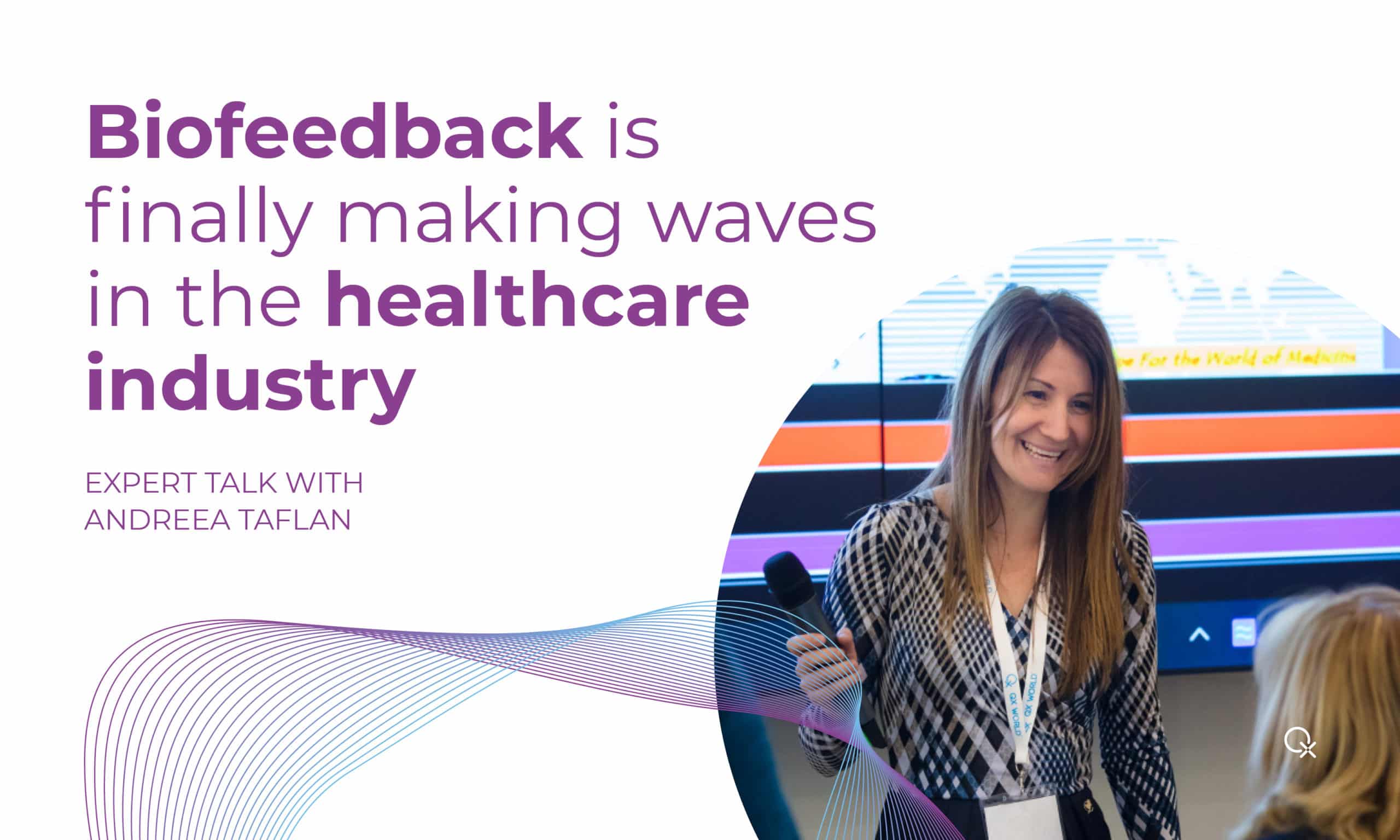
Following years of skepticism, the healthcare industry is starting to embrace biofeedback technology. We spoke to Andreea Taflan from QX World about the driving forces behind this changing mindset, and what she thinks will happen next.
Biofeedback is a technique that teaches you to control your body by measuring involuntary body functions (such as heart rate, breathing patterns, and muscle tension) and feeding that information back to you in real time. By sending electric pulses through the body, a biofeedback device can explore health-related issues and may even help affected cells return to their original state.
I wouldn’t say negative reviews per se, but there has been a lot of skepticism. Getting the medical world on board with any new or alternative method is quite challenging, to say the least. There’s a lot of red tape involved, and getting the required research done for approval is a costly business. The clinical industry is already stretched thing when it comes to funding. So it’s not surprising they aren’t always so eager to welcome new players to the field. Because there has been little financial backing so far, biofeedback technology has had a tough time finding its way to a mainstream audience. Fortunately, I’ve seen a lot of changes happening in that regard over the last few years.
As I see it, there are three main drivers. Most of all, the internet has prompted a rise in demand for complementary healthcare practices in general. Because people are more able to explore health-related facts and issues on their own, they are more critical towards doctors and their expertise, and increasingly asking themselves: “Is this really the right treatment for me? Is this the best I can do to improve my life?”
Also, COVID-19 has led people to adopt a more open mindset regarding complementary approaches to healthcare. Compared to some years ago, people are much more careful and aware of what they do to – and put into – their bodies. They are also much more interested in non-invasive and preventive healthcare – making biofeedback technology an excellent candidate.
But even on the medical side, there is a growing openness to explore alternative pathways and try out new technologies to enhance the patient experience. I like to think pioneering biofeedback tech companies like QX World (of which I am a co-founder and CEO) have something to do with that. Due to their extensive research and development, and continuous efforts to raise awareness.
The numbers fluctuate, of course, but our core research and development staff consist of 10 specialists. They are neurologists, general practitioners, engineers, and software developers, most of whom have been with us ever since I co-founded QX World in 2012. I feel very fortunate to work with such a great team of experts, and to still have them by my side after so many years.
I’m blessed with an incredible R&D team who work tirelessly to fine-tune and upgrade our technology according to the most recent discoveries. But ultimately, I feel that education is where we make the biggest difference. We not only set out to develop top-notch technology but also teach healthcare practitioners how to get the most out of our biofeedback devices. We do so by organizing both live and online classes and hosting conferences. We also use our blog and various offline channels to share our knowledge of good health practices. Because everybody deserves easy access to a healthy lifestyle.
There is so much going on right now, I don’t really know where to begin <laughs>. At QX World, for instance, we are currently experimenting with beauty applications. We recently conducted a study on the effects of biofeedback technology on facial lines when combined with natural cosmetics, and the results so far look very promising. We are also continuing to optimize our existing biofeedback devices and will be developing new devices in the coming years, all of which will help facilitate complementary healthcare.
When I experienced my first biofeedback session at the age of 19, I was amazed at the effect it had on me. And I’m still fascinated how this non-invasive technique can be used to identify unconscious problems, reduce stress and anxiety and in so doing, benefit our health in so many areas. It’s why I wake up fully motivated every day to share this incredible technology with the world. And I’m sure it’s what will keep me going over the next 5, 10 or even 20 years.
Who is Andreea Taflan?
Andreea Taflan is CEO and co-founder of QX World. She studied Business Management and Marketing and has a Master’s degree in Public Relations and Communications. Andreea was appointed as the right hand of the original developer of biofeedback technology in 2005. Since 2012 she has taken the lead in further developing the technology. Today, she is considered a leading expert in the field of biofeedback.
+1 (989) 681-1063
+1 (856) 322-8589